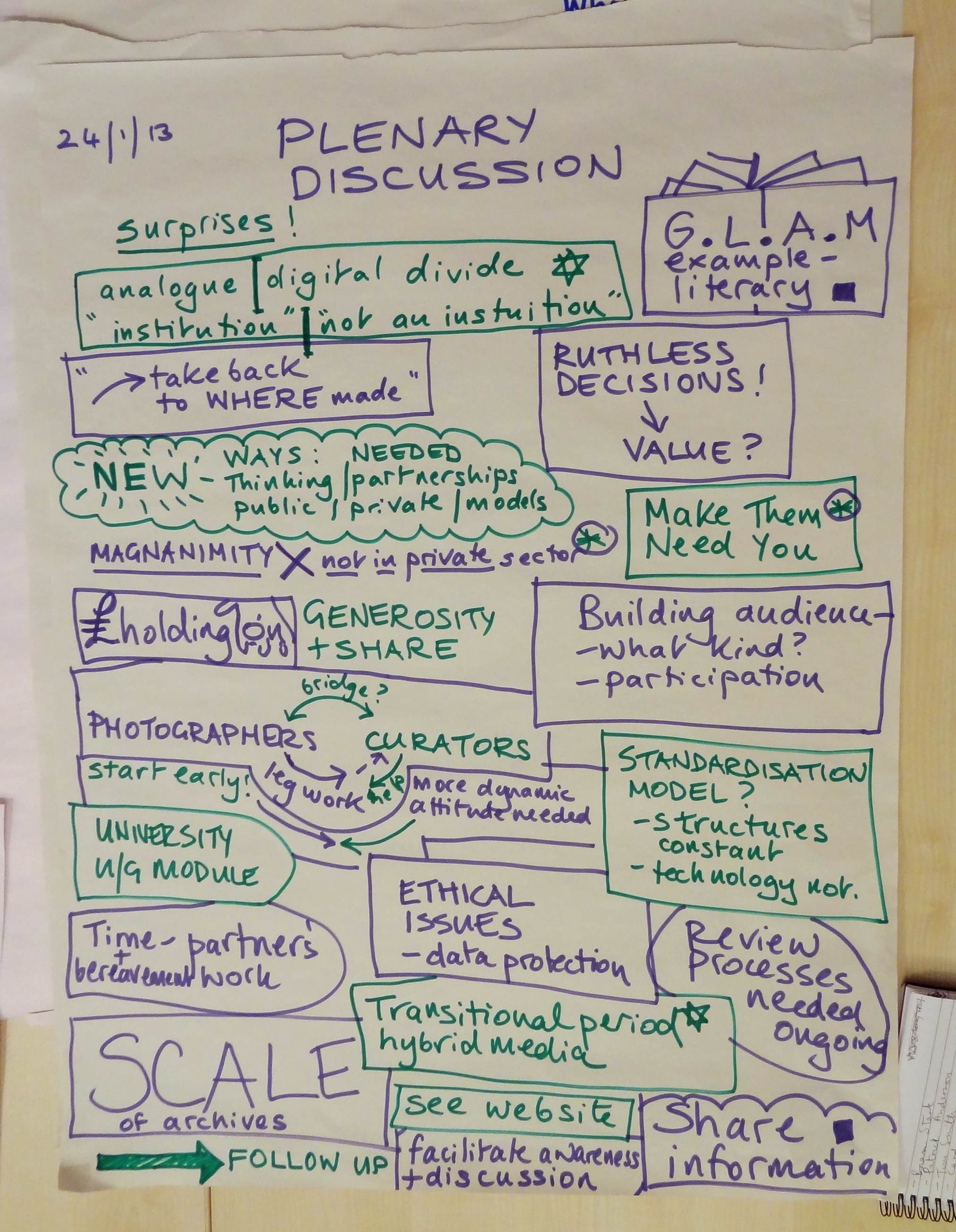Photographers' Archives and Legacy Project focus group
With Redeye, The Photography Network, at the Chinese Arts Centre, Manchester, 24 January 2013
Participants included photographers and individuals managing collections in regional institutions. The workshop addressed the question: ‘What can we do about photographers’ archives?’
Prior to the event, Redeye ran a survey among its members to find out about attitudes to the issue. There were 69 responses, 52 from individual photographers, nine from people working with collections and archives, five from researchers and curators and three family members/heirs. 24 of those who answered the survey attended the Manchester event.
Organised in collaboration with Redeye, the event began with presentations by Jem Southam, photographer and Professor of Photography at Plymouth University and Greg Hobson, Curator of Photographs at the National Media Museum, Bradford. In the workshop that followed (and in the associated survey), participants explored:
- what constitutes a photographer’s archive?
- why are they important, and to whom?
- aspirations for the archives they were dealing with (private, public access etc)
- the current condition and level of organisation of the archives
- the barriers to doing anything with them / about them
- how those barriers might be overcome.

Key issues from the workshop
- Scale of the issue is enormous and daunting – huge number of images, technological challenges to do with storing both analogue and digital work
- Complacency – many practitioners think their digital files are safe; their longevity is untested
- Time and motivation to sort out archive – most photographers would rather be working on the next project than ensuring the consistent organisation of existing or old work
- Money – it costs to acquire archiving materials, pay an intern or assistant to help with organisation etc
- Lack of knowledge about systems for organising archive, and issues such as copyright, how family can or should deal with a photographer’s estate
- Perceptions of value – many photographers perceive their work and archives to have a greater monetary value than they actually have
- Lack of confidence that there would be a clear purpose in keeping, organising and trying to make work publicly accessible
- A lack of confidence or trust in institutions
- Institutions are increasingly constrained by lack of space, resources and specialist staffLack of specialist knowledge of the history of photography
|
Ideas for addressing the challenges: - Some photographers talked about the need to edit more, not keep so much, even to throw material away - Take the work back to the place where it was made (and an appropriate institution); be prepared to split collection up - Need to develop relationships with institutions at an early stage - Collaborate – either a group of institutions or a group of individuals to develop a collection / public presence for work, most probably online - New ways of working – public and private sector working together on conservation and storage, not just on exhibitions and other outputs - Share knowledge, ideas and resources more – educate photographers - Colleges to teach organisation of work / planning for a legacy - Proselytise – about importance of this and making collections more attractive, publicly accessible, more widely known about. |
 |
There are two groups involved – both can contribute:
- photographers: is a role for educating photographers to think about organising their work etc; shouldn’t wait until the end of their lives, or until they have some status
- archivists and curators: are well placed to be involved in advocacy and conversations. Archive institutions are getting better at understanding analogue and digital together
Guidelines would be useful, but would need regular updating to reflect changes.
General comments from the Redeye survey:
“Having advice and guidelines on how best to catalogue and store images would be most useful.”
“I keep everything, I have issues finding images or whole films. It's not an archive, it's a mess. I have no workflow system in place which worries me as I'm about to start a project that involves one 35mm a week!”
“One issue is that I may be the only person who can understand my archive, how I have organised it, whether that is by year, month, category etc.”
“The difference in photographic media has always played on my mind with regards to an archive. As technology changes the multi-archiving of work becomes ever more complicated and difficult.”
“I would like to know if, after the archive is housed, would the photographer hold copyright for the material?”
“All organised; is it accessible to others?
Will my family care as much as me?
Is it of any value (non monetary) to anyone else?”